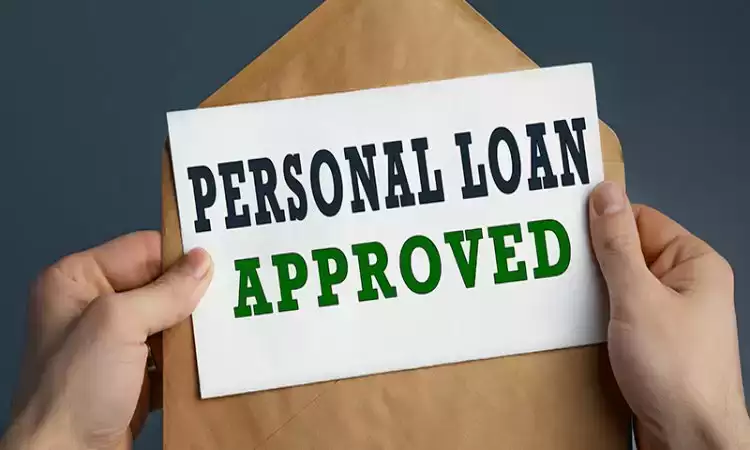First-Time Homebuyer’s Guide to Navigating the Home Loan Process with Confidence
Applying for A Home Loan Is a Step Towards Owning Your Dream Home. However, the Home Loan Application Process Can Be Challenging, Especially if You Are a First-Time Homebuyer.
A Step-By-Step Guide on How to Apply for A Mortgage Loan can Help Make the Borrowing Experience Seamless, as Being Aware of The Nuances of The Home Loan Process Can Empower You to Make Informed Decisions. Take a Look.
Assess Your Financial Situation

Avoid Diving Headfirst Into the Mortgage Process without Analyzing Your Financial Situation. Review Your Credit Score, as This Significantly Impacts Your Ability to Secure Lower Closing Costs and A Favorable Mortgage Rate.
Plus, Consult a Financial Advisor to Understand Your Income-To-Debt Ratio. This Helps Ascertain how Much You Can Borrow.
Understand the Different Mortgage Options
Now that You Know Your Financial Situation, the Next Step Is to Explore the Different Mortgage Options at Your Disposal. the Common Ones Include:
- Adjustable-Rate Mortgage – It Initially Features a Fixed-Rate Period, Which Is Followed by Adjustments According to Market Conditions.
- Fixed-Rate Mortgage – Consistent Monthly Payments with A Fixed Interest Rate Over the Life of The Loan.
- Va Loan – Reserved for Active-Duty Service Members, Veterans, and Eligible Spouses. the Terms Are Favorable with No Down Payment Requirement.
- Fha Loan – This Is Ideal for Buyers with Smaller Down Payments or Lower Credit Scores. Insured by The Federal Housing Administration.
- Usda Loan – Offers Zero Down Payment Options. Designed for Rural Homebuyers, Having Low to Moderate Incomes.
- Shared Equity Programs – Federal and State Funds Offer Down Payments of 20-30% of The Market Value. when You Sell the House, It Will Be Sold Through the Housing Trust to A Qualified Borrower, with A Portion of The Appreciation Going Back Into Your Chosen Program.
Remember, Each Home Loan Option Must Be Carefully Researched to Find out Which One Aligns Best with Your Financial Situation and Goals.
Get Pre-Approved
Getting Pre-Approved for A Mortgage Is Highly Recommended Before You Start House Hunting. This Involves Submitting the Necessary Financial Documents to A Lender Who Will Analyze Your Creditworthiness and Determine the Amount You Can Borrow.
Pre-Approval Is Critical Because It Will Give You a Clear Idea of The Budget for Your Home and Also Demonstrate to The Sellers that You Are a Qualified, Serious Buyer.
For Getting Pre-Approved, Be Prepared to Submit the Following Documents:
- Proof of Income (tax Returns, Pay Stubs, the Last Two Years of W-2s, Etc.)
- Employment History (typically, Lenders Look for A Full Two-Year Period)
- Asset Statements (investments, Bank Accounts, Retirement for A Minimum of The Last Two Months)
- Information on Outstanding Liabilities and Debts
Gather and Keep All the Necessary Documents Organized so You Can Expedite the Process of Getting Pre-Approved for A Mortgage.
Understand the Closing Costs
The Down Payment Is Not the Only Cost You Must Be Concerned About. It Is Essential to Understand the Closing Costs, Which Generally Range from 2-5% of The Purchasing Price of The Home. These Costs Cover Various Costs, Such as Title Insurance, Appraisal Fees, and Attorney Fees.
Receiving the Loan Approval

Once You Have Submitted Your Loan Application, Along with The Necessary Documentation, the Lender’s Underwriting Team Will Review All Your Documents to Understand the Risks Associated with Lending You Money and Your Creditworthiness.
Generally, This Process Takes Approximately a Week and Might Even Involve Further Explanations or Documentation of Certain Financial Aspects.
When the Underwriting Process Is Completed Successfully, You Will Receive Loan Approval. the Next Step Is for The Lender to Order an Appraisal to Review the Value of Your Home.
At This Stage, You Must Carefully Scrutinize the Loan Terms, Including the Closing Costs, Interest Rates, and The Loan Amount.
Close the Deal
Closing on Your Loan Is the Final Step in The Home Loan Process. This Is Where You Will Be Signing All the Necessary Documents and Officially Becoming the Owner of Your New Home. It Is at This Stage that You Will Be Paying the Closing Costs, Such as Appraisal Fees, Loan Origination Fees, and Title Insurance.
Helpful Tips for A Seamless Home Loan Process
- Check Your Credit Score Because It Plays an Essential Role in Ascertaining Your Eligibility for A Mortgage and The Interest Rate You Will Receive. Take Actionable Steps to Improve Your Credit Score by Reducing Debt, Paying Bills on Time, Etc.
- Keep All the Required Documents Organized and Readily Accessible Throughout the Home Loan Process so That Loan Approval Can Be Expedited.
- Stay in Regular Contact with Your Lender so You Can Promptly Respond to Their Requests and Provide Them with The Additional Information They Might Require to Process Your Application.
- Avoid Making Any Major Financial Changes when You Are in The Middle of Securing a Mortgage, as This Might Impact Your Loan Approval.
- Be Patient! the Mortgage Process Can Be Pretty Complicated and Lengthy, and It Can Involve Lots of Documentation. the Key Is to Remain Calm Throughout the Process.
Final Thoughts
Buying a Home Is a Significant Milestone in People’s Lives, Along with Being a Major Investment. by Understanding the Home Loan Process, First-Time Homebuyers Like Yourself Can Make Informed Decisions without Feeling Overwhelmed. So, Start by Understanding Your Financial Situation, Checking Your Credit Score, and Getting Pre-Approved for A Mortgage so You Have a Clear Budget for Your Dream Home.
Check Your Credit Score and Take Steps to Improve the Score so You Can Be Eligible for Favorable Loan Terms. Plus, Keep All the Necessary Documentation Organized and At Hand so You Can Expedite the Home Loan Process.
Most Importantly, Remain Patient Throughout the Process. the Home Loan Process Can Be Daunting, but If You Follow the Tips Given Above, the Journey Will Be Enjoyable.







